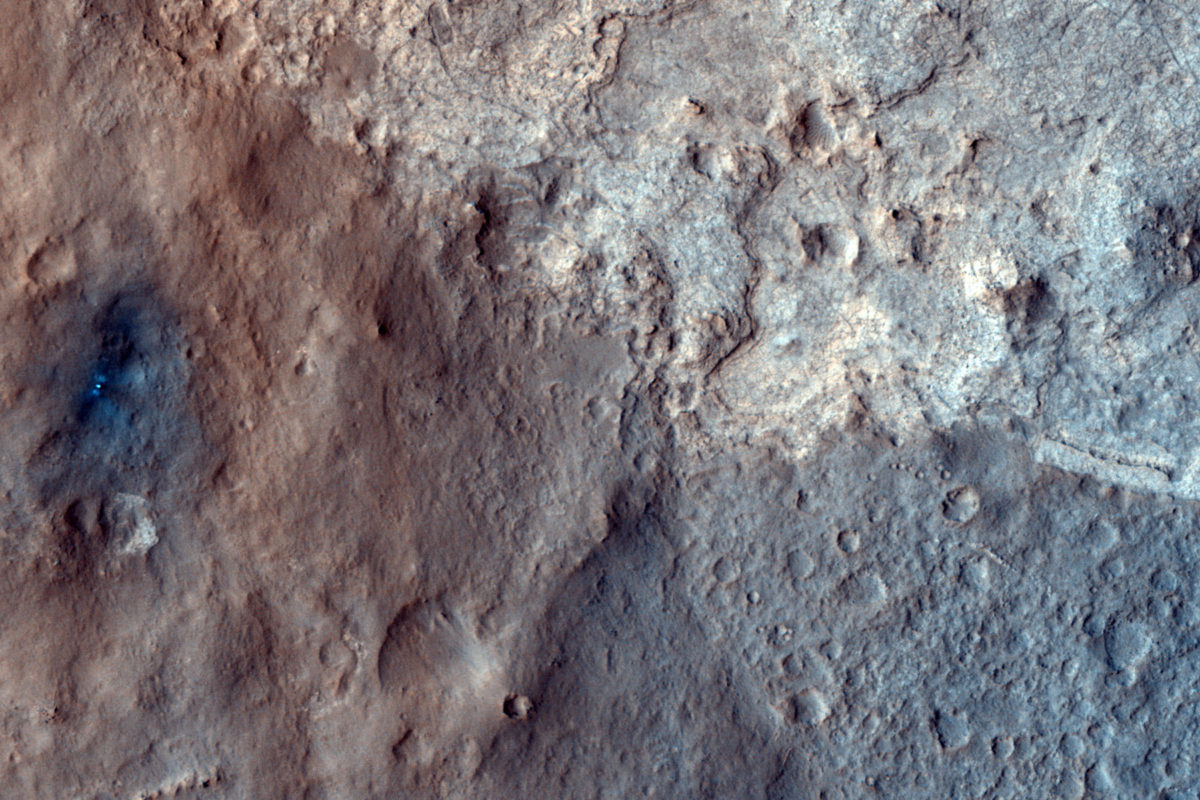Emily Lakdawalla • Oct 01, 2012
Beautiful rocks ahead at Glenelg, but first, Curiosity must dig in the sand
Check out Curiosity's view as of sol 54, gazing east toward Glenelg with the zoomed-in view of Mastcam 100. It doesn't look like much at this resolution; you really have to enlarge it to see the whole thing. Not only are the rocks in view interesting, but there are so many interesting-looking different kinds of rocks, from thin platy ones in the middle to angular cobbles at right to two lumps that look like sleeping sea lions toward the left. So much to see!

Compare it to the orbital view of Glenelg:

Here's where Curiosity is right now:
But I think we're going to have to wait a bit to enjoy the diverse rocks at Glenelg, because this is what Curiosity has in view right now:

Will this sand ripple be the source of Curiosity's first soil sample? If so, get used to the view, because we're going to be here for two or three weeks. Good thing it's a nice view! Meanwhile, on sol 51, they checked out the soil scoop, which appears to be clean and ready for action:

Let’s Go Beyond The Horizon
Every success in space exploration is the result of the community of space enthusiasts, like you, who believe it is important. You can help usher in the next great era of space exploration with your gift today.
Donate Today

 Explore Worlds
Explore Worlds Find Life
Find Life Defend Earth
Defend Earth


